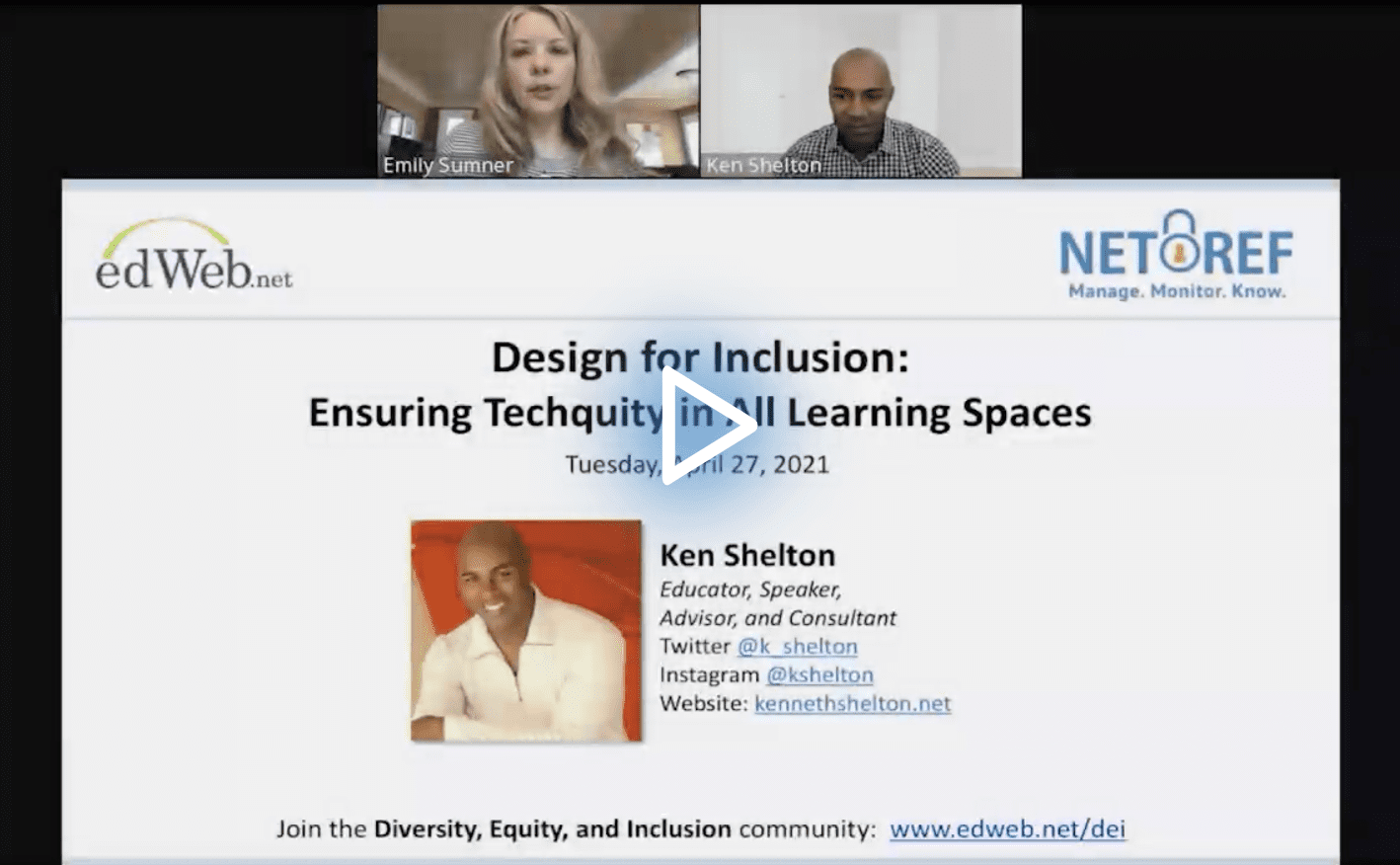Ensuring “Techquity” in All Learning Spaces
“Techquity,” as defined by educator and consultant Ken Shelton in a recent edLeader Panel, sponsored by NetRef, is the intersection of the use of technology and ensuring equitable learning environments. He defines equity simply as access and opportunities for all learners to realize their full potential. Whether it is a classroom, the school, or the whole school experience, if a student’s learning environment is not culturally affirming, culturally responsive, and culturally relevant, they cannot connect learning to their real-world environment.
There are three main principles of being a culturally responsive educator that ensures their students’ sustainable growth. First, educators need to validate students’ experiences and values actively and openly, actively dismantling the power dynamics that reward a dominant group and empowering students. When students feel empowered as learners, they will be more invested in their learning and connect their learning with their lived experiences.
6 Themes of Culturally Relevant Learning Environments
Shelton identifies six themes of culturally relevant learning environments.
- The first is recognizing diverse student identities as assets and strengths that can advance individual and group learning, rather than seeing them as challenges or difficulties to be overcome. A characteristic of being culturally responsive is getting to know students’ lives and viewing their backgrounds as assets and not liabilities. Shelton recommends that educators create conditions for students to be able to identify what their strengths are and then how they might use those strengths in the classroom.
- The second theme is vulnerability. As educators, we must show our vulnerability to our students to recognize that there is room for growth for all.
- The third theme is understanding students’ cultural identities and creating learning opportunities that allow students to identify the similarities and differences between their cultures.
- The fourth theme, rigor, challenges students to reach beyond their perceived potential. When students identify with the content from a culturally relevant perspective, complex concepts are easier to scaffold and result in student growth and success.
- Shelton reminds us that there is a direct correlation between the fifth theme, engagement, and investment in our students. Educators should account for their highly engaged and less engaged students by designing tech-based experiences that allow for multiple engagement ways.
- The whole idea around being culturally affirming, encouraging cross-cultural connection, promoting dialogue, and encouraging students to identify their assets is the first step towards building the last theme, relationships. “We encourage students to collaborate, but students will not effectively collaborate if we don’t even effectively collaborate with someone we haven’t built a relationship with,” he said.
Lastly, Shelton reflects, “For us as educators, we must be intentional in asking ourselves while learning X unit or X content what voices are highlighted, what voices have agency, and what voices are missing? Now, how might I use the technology to give access to the voices that are missing and support my students’ exposure to, in this case, non-dominant populations from an asset perspective, not from a deficit perspective?”
This edWeb broadcast was sponsored by NetRef.
WATCH THE EDLEADER PANEL RECORDING
About the Presenter
Ken Shelton (He/Him/His) has worked as an educator for over 20 years and spent most of his classroom experience teaching technology at the middle school level. As a part of his active involvement within the educational technology community, Ken is an Apple Distinguished Educator, a Microsoft Innovative Educator Expert, and a Google Certified Innovator. He has worked extensively at the policy level with a number of State Departments of Education, Ministries of Education, and non-profits, and was appointed to the Education Technology Task Force formed by a previous California State Superintendent of Public Instruction. Ken is the ISTE Digital Equity PLN 2018 Excellence Award winner and has also been named by EdTech Magazine as an influencer to follow. He holds an M.A. in education with a specialization in educational technology as well as new media design and production.
Join the Community
Diversity, Equity, and Inclusion is a free professional learning community on edWeb.net for educators to collaborate around creating equitable learning environments in schools and districts, and for remote learning.

The summary of this presentation was written by Eileen Belastock.
Eileen Belastock, CETL is the Director of Technology and Information for Nauset Public Schools, MA, and also works with edWeb.net to write articles on their professional learning edWebinars. You can follow Eileen on Twitter @EileenBelastock.




Comments are closed.